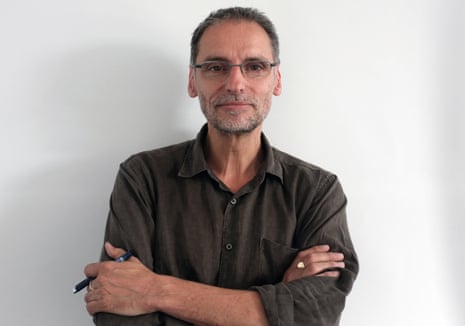In 1997 the young architectural practice Haworth Tompkins was commissioned to redesign the Royal Court theatre in London. Since then they have transformed the way theatres look and work, redesigning the pop-up Almeidas, the National, Bristol Old Vic, Liverpool Everyman, the Young Vic, the Bush. Their work has been as influential as that of any artistic director. Co-founder Steve Tompkins speaks on behalf of a cooperative organisation.
Your background was in social housing. Why on earth did you take on theatres?
Theatre architecture is not just about performance. It’s about how you frame civil society. Where are the spaces in which strangers can meet at peace in a city? That for us is the underpinning idea. If you look at the support space of the theatre as a commercial space like a shopping mall or a branded coffee bar something has gone terribly wrong. You predispose the audience to being in a mood of consumerism rather than human transaction.
What makes an ideal theatre building?
It has to be able to respond to the mood of the performance. If you’ve got a gaiety space and you’re putting on Beckett you’re in trouble. If you have a sombre black box and you’re trying to do a comedy it’s deadly. That applies not just to the auditorium but to the facade. A theatre should behave like a good host. It needs to have eyes in the back of its head, to pull people in and diminish divisions. These should be spaces where you feel at home at any time of the day.
What’s the most important factor?
Lighting is crucial. I’m phobic about lighting that is too bald. A lot of foyers are overlit. The Royal Court has very low levels of light. If you go to the Theatre Upstairs you might easily turn back on the way: you think, I must have gone wrong, this can’t be in the public territory. That was what we wanted: the idea of leaving the party and venturing up the dark staircase to the attic.
What are the main difficulties?
Intelligent people become foamy-mouthed arch-conservatives when it comes to architecture. And of course many of the best theatre practitioners prefer to work in a found space. When the National was being designed, Denys Lasdun said to Peter Brook: “I guess you’d rather have a bomb site in Brixton” and Brook said “yes“. You have to be extraordinarily self-confident to ride that out while conceiving an enormous concrete palace of culture.
You won the 2014 Stirling prize for your redesign of the Liverpool Everyman. What was it like working there?
People were anxious that it would become too posh, that the soul of the building would be lost. One taxi driver actually stopped the cab and said: “You fuck that up, you’re fucking fucked.” That was pretty much the text for the project. It has a sense of occasion, but there are corners to perch in, places for conspiracy.
You were working on Battersea Arts Centre when it went up in flames a year ago. How is it now?
The grand hall was magnificent – very sociable and celebratory – but quite technically constrained. After the fire we were left with the charged shell of this extraordinary space. We developed a filigree timber version of the ceiling which keeps the historic character of the room but is technically more capable. Battersea was built when craftsmanship was a given. It has beautiful mosaic floors, carving, elaborate plasterwork. We wanted to keep that grandeur.
You’re working on Nicholas Hytner’s new London theatre. What will that be like?
It’s at Potters Fields Park between the GLA building and Tower Bridge and it will open in autumn 2017. It will seat 900. We were aiming for that sense of a wrap that you get at the Young Vic. We have been learning from courtyard spaces.
Is there anything you dream of doing?
I would love to design an opera house. Probably not in Britain. It would be interesting to create something that wasn’t about social elitism and capital consumption: something more democratic and more gutsy. It would be good to work with Katie Mitchell, and do with an opera house what she has done in her productions.

Comments (…)
Sign in or create your Guardian account to join the discussion